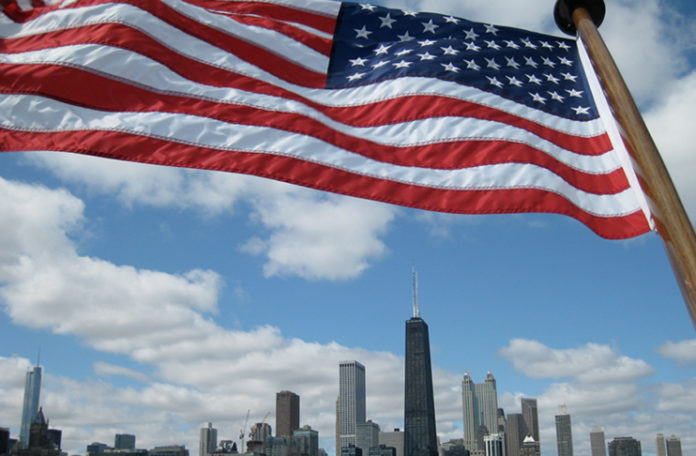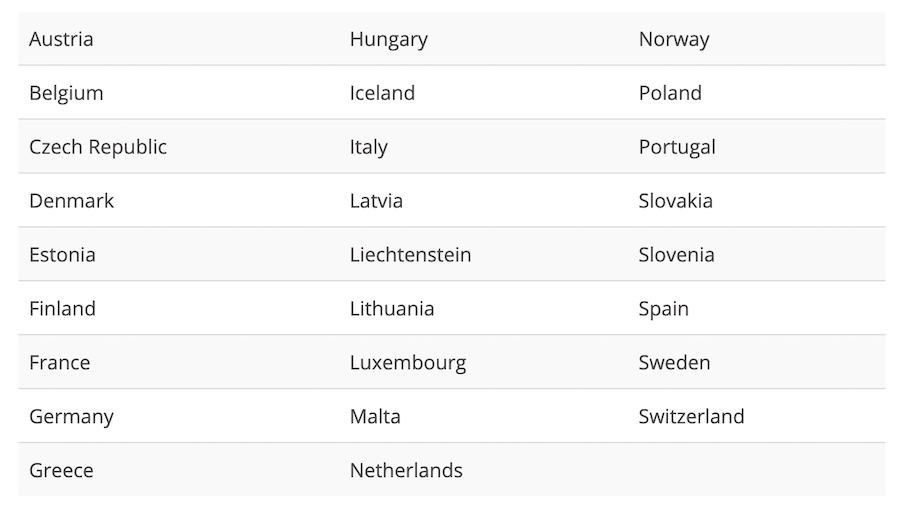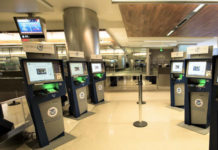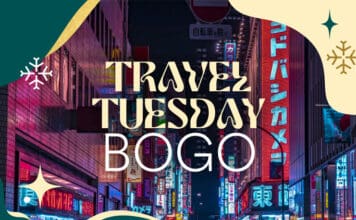
TravelingForMiles.com may receive commission from card issuers. Some or all of the card offers that appear on TravelingForMiles.com are from advertisers and may impact how and where card products appear on the site. TravelingForMiles.com does not include all card companies or all available card offers.
Some links to products and travel providers on this website will earn Traveling For Miles a commission that helps contribute to the running of the site. Traveling For Miles has partnered with CardRatings for our coverage of credit card products. Traveling For Miles and CardRatings may receive a commission from card issuers. Opinions, reviews, analyses & recommendations are the author’s alone and have not been reviewed, endorsed, or approved by any of these entities. For more details please see the disclosures found at the bottom of every page.
Exactly a week ago, people living in Europe were given a glimpse of hope that they would soon be allowed to travel to the United States when Reuters announced that on the order of outgoing President Donald Trump, the United States would be lifting the restrictions that have banned most travelers from Europe, the UK, and Brazil from entering the country since March. Just hours later, the incoming administration put those hopes on hold.
The Background
Generally speaking, by the middle of March last year anyone who wasn’t a US national, a legal resident of the US, or closely related to a US national/legal resident of the US and who had been visiting one of 28 European countries was banned from entering the United States. Between then and now a few more countries were added to the ban and then, less than 48 hours before he was due to leave office, President Trump signed an order to lift the ban that he had put in place.
Apparently, the idea was to have the ban lifted on the same day that new rules came into force that require most international travelers to provide evidence of a negative COVID test before they travel to the United States. Why the lifting of the ban was announced almost a week after the new rules were announced is anyone’s guess but whatever the reason, it didn’t take the incoming Biden administration to say “not so fast”.
Within a couple of hours of the announcement that the travel ban was to be lifted on 26 January (today), Jen Psaki (the new White House Press Secretary), took to Twitter to confirm that President Biden’s administration would not be allowing the travel ban to be lifted and, if anything, the rules on international travel would be tightened.
The Now
With less than 24 hours to go before the travel bans were due to be lifted, President Biden signed a new executive order which not only reversed the order that was set to lift the travel bans but also added South Africa to the list of countries included in the ban.
Here’s a key paragraph from the executive order:
I have determined that it is in the interests of the United States to take action to restrict and suspend the entry into the United States, as immigrants or nonimmigrants, of noncitizens of the United States (“noncitizens”) who were physically present within the Schengen Area, the United Kingdom (excluding overseas territories outside of Europe), the Republic of Ireland, the Federative Republic of Brazil, and the Republic of South Africa during the 14-day period preceding their entry or attempted entry into the United States.
The countries that make up the Schengen Area total 26 and are as follows:

As with the original executive order that put the ban in place back in March 2020, there are quite a few exceptions to the ban that President Biden has put into place.
Per the executive order, the “Suspension and Limitation on Entry” does not apply to:
- any lawful permanent resident of the United States;
- any noncitizen national of the United States;
- any noncitizen who is the spouse of a U.S. citizen or lawful permanent resident;
- any noncitizen who is the parent or legal guardian of a U.S. citizen or lawful permanent resident, provided that the U.S. citizen or lawful permanent resident is unmarried and under the age of 21;
- any noncitizen who is the sibling of a U.S. citizen or lawful permanent resident, provided that both are unmarried and under the age of 21;
- any noncitizen who is the child, foster child, or ward of a U.S. citizen or lawful permanent resident, or who is a prospective adoptee seeking to enter the United States pursuant to the IR-4 or IH-4 visa classifications
- any noncitizen traveling at the invitation of the United States Government for a purpose related to containment or mitigation of the virus;
- any noncitizen traveling as a nonimmigrant pursuant to a C-1, D, or C-1/D nonimmigrant visa as a crewmember or any noncitizen otherwise traveling to the United States as air or sea crew;
- any noncitizen who is:
- seeking entry into or transiting the United States pursuant to one of the following visas: A-1, A-2, C-2, C-3 (as a foreign government official or immediate family member of an official), E-1 (as an employee of TECRO or TECO or the employee’s immediate family members), G-1, G-2, G-3, G-4, NATO-1 through NATO-4, or NATO-6 (or seeking to enter as a nonimmigrant in one of those NATO categories); or
- whose travel falls within the scope of section 11 of the United Nations Headquarters Agreement;
- any noncitizen who is a member of the U.S. Armed Forces and any noncitizen who is a spouse or child of a member of the U.S. Armed Forces
- any noncitizen whose entry would further important United States law enforcement objectives, as determined by the Secretary of State, the Secretary of Homeland Security, or their respective designees, based on a recommendation of the Attorney General or his designee; or
- any noncitizen whose entry would be in the national interest, as determined by the Secretary of State, the Secretary of Homeland Security, or their designees.
That may seem like quite an extensive list but if you look at it carefully, it becomes obvious that the exceptions will not apply to very many people and that most people who fall into one of the exempt categories are probably already in the United States anyway.
There is no set date for this executive order to expire, so it is set to remain in effect until the President decides to rescind it.
The need for this ban will be reviewed “no more than 30 days after the date of this proclamation” and by the final day of each calendar month thereafter but anyone hoping for this to be a short-term measure shouldn’t read too much into those words – they also appeared in the original ban and that one was in place for over 10 months.
Bottom Line
If you’re not a US national, a legal resident of the US, or closely related to a US national/legal resident of the US and you have been traveling in a country that’s listed above in the past 14 days, you are almost certainly still banned from traveling to the United States for at least the next 30 days. Probably for a lot longer.
If you’re a US national, a legal resident of the US, or closely related to a US national/legal resident of the US, you’re free to return to the US regardless of where you have been traveling but you will have to either present proof that you have recovered from COVID-19 in the past 90 days, or that you have tested negative for COVID-19 within 3 days of your date of travel.
















